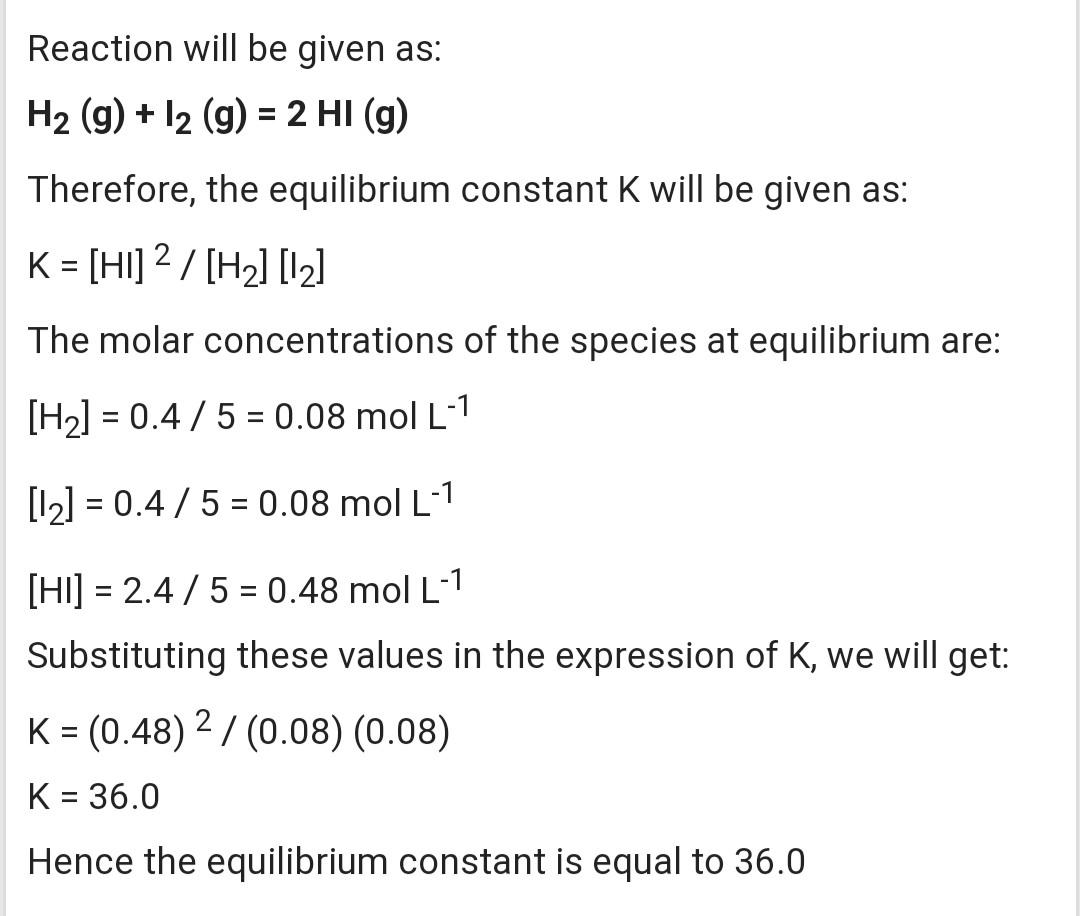An equilibrium system for the reaction between hydrogen and iodine is a captivating concept in chemistry, where the opposing forces of reaction and reversal dance in delicate balance. This system, governed by the principles of equilibrium and Le Chatelier, offers insights into the dynamic nature of chemical reactions and their applications in various fields.
The equilibrium constant for this reaction, a measure of the extent to which the reaction proceeds, provides a quantitative understanding of the factors that influence the equilibrium position. By manipulating these factors, such as temperature, pressure, and concentration, scientists can fine-tune the system to achieve desired outcomes.
Equilibrium Systems: An Equilibrium System For The Reaction Between Hydrogen And Iodine
An equilibrium system is a system in which the forward and reverse reactions occur at the same rate, so that the concentrations of the reactants and products do not change over time. The equilibrium constant is a number that describes the relative amounts of reactants and products at equilibrium.
Le Chatelier’s principle states that if a change is made to an equilibrium system, the system will shift in a direction that counteracts the change.
The Reaction between Hydrogen and Iodine

The chemical reaction between hydrogen and iodine is a reversible reaction that can be represented by the following equation:
“`H2 + I2 ⇌ 2HI“`
The equilibrium constant for this reaction is:
“`K = [HI]^2/[H2][I2]“`
The equilibrium constant is a function of temperature. The value of K increases with increasing temperature.
Experimental Methods
There are a number of experimental methods that can be used to study the equilibrium system for the reaction between hydrogen and iodine. One common method is to measure the partial pressures of the reactants and products at equilibrium. Another method is to measure the electrical conductivity of the solution.
Each of these methods has its own advantages and disadvantages. The partial pressure method is relatively simple to use, but it can be difficult to obtain accurate results. The electrical conductivity method is more accurate, but it is more difficult to use.
Applications of the Equilibrium System
The equilibrium system for the reaction between hydrogen and iodine has a number of applications. One application is the production of hydrogen. Hydrogen can be produced by reacting hydrogen iodide with steam:
“`
HI + H2O ⇌ H2 + I2 + H2O
“`
Another application is the production of iodine. Iodine can be produced by reacting hydrogen iodide with chlorine:
“`
HI + Cl2 ⇌ I2 + 2HCl
“`
The equilibrium system for the reaction between hydrogen and iodine can also be used to study the kinetics of chemical reactions. The kinetics of a reaction is the study of the rate at which the reaction occurs.
Final Conclusion
The equilibrium system for the reaction between hydrogen and iodine serves as a valuable tool for studying the fundamentals of chemical equilibrium and its practical implications. Its applications extend beyond the realm of chemistry, offering potential advancements in fields such as energy production and environmental remediation.
Questions and Answers
What is the significance of the equilibrium constant in this system?
The equilibrium constant provides a quantitative measure of the extent to which the reaction proceeds, allowing scientists to predict the relative amounts of reactants and products at equilibrium.
How can Le Chatelier’s principle be applied to this system?
Le Chatelier’s principle states that a change in one factor affecting equilibrium will shift the position of equilibrium to counteract the change. By manipulating factors such as temperature, pressure, and concentration, the equilibrium can be shifted in a desired direction.
What are some practical applications of this equilibrium system?
This equilibrium system can be used in the production of hydrogen or iodine, and has potential applications in energy storage, environmental remediation, and chemical synthesis.